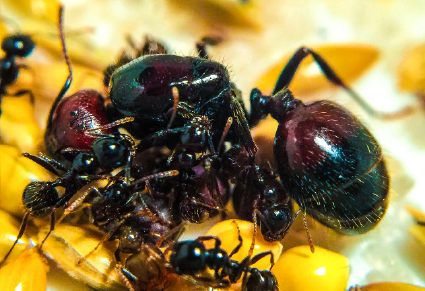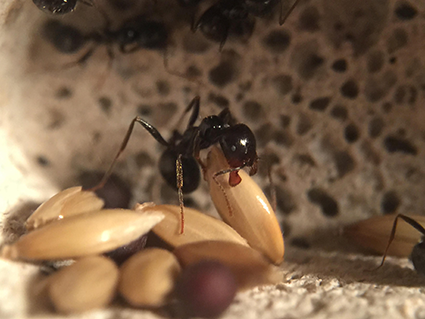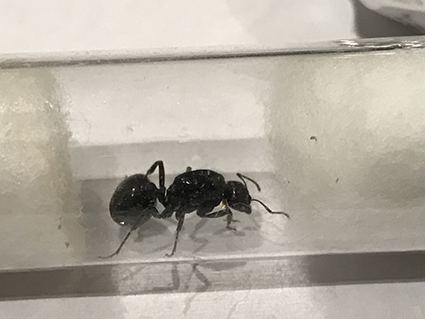SPECIES PROFILE: Messor barbarus
The seed-loving harvester ants that are a popular choice for novice keepers

BASIC INFORMATION
Scientific name: Messor barbarus
Common name: harvester ant
Geographic spread: widely spread throughout much of Southern Europe, North Africa and parts of Asia
Habitat: gardens, parks and forests
Queen’s life expectancy: around 20 – 25 years
Queen size: 15 - 18mm
Worker size: 3mm – 14mm
Castes: queen, workers, majors
CARE
Care level: 1, suitable for beginners
Humidity requirements: 30 - 50% in the outworld, 50 – 70% in the nest
Temperature requirements: 21 - 26°C
Suggested housing: ytong, plaster or soil nests
Nutrition: seeds (canary seed, dandelion and other grass seeds), insect protein such as mealworms, crickets, fruit flies

BEHAVIOUR
Hibernation: around six weeks between November and February at 10 - 15°C
Nuptial flights: September – October
Colony size: approximately 7,000 workers
Monogyne/polygyne: monogyne
Founding style: claustral

Species Summary
Messor barbarus can be found throughout much of Southern Europe, North Africa and some parts of Asia. A popular species for beginners, they can nonetheless be difficult to start from a single queen due to their sensitivity to vibrations. As a harvester ant, seeds for an important part of their diet, and these are taken back to their nests for conversion into “ant bread”, their staple food.
Harvester ants love to dig, so provision of some substrate in their habitat is appreciated, although too much will lead to the colony disappearing underground and out of sight! Soil, plaster or ytong nests work well for this species, although these should be enclosed within a tank as they are great diggers and can tunnel through ytong or plaster.
Messor barbarus need a humidity gradient available within the nest as they store their grain in drier areas to minimise mould growth. The nest area should be kept dark, as they are very sensitive to light.
This species is particularly popular due to the variation in colours available. While the most common phenotype is all black, some queens are red heads, with a black thorax and gaster. Bi-colour queens, the rarest form, featuring red heads and gasters and black gasters, can also be found.
Personal experiences keeping this species
Raising a colony from a single queen is notoriously difficult as the queens are easily stressed by vibrations and exposure to light. Patience is certainly required, and keepers are advised to keep the queens in a test tube setup a warm, dark, quiet place with minimal checking. Not an easy task!
They need plentiful access to water, preferably as a moistened ball of cotton wool or in a drinker that is designed to keep them safe from drowning as they love water, but can be quite clumsy and prone to drowning. Fortunately, this also means that they’re not very good at climbing walls, so you don’t need to worry too much about escapees, but a thin oil, PTFE or baby powder barrier should be sufficient.
A relatively low-maintenance species, Messor barbarus is more than happy to be left undisturbed (with sufficient water and food!), and are a good choice for beginners. More experienced keepers might find them a bit boring, but I personally love their unsteady gait!
Image information
Top: “Barbara”, a bi-colour queen © Dan Mills. Middle: A worker storing seeds © Dan Mills. Bottom: “Lois”, an all-black queen © Sonata Winchester.

